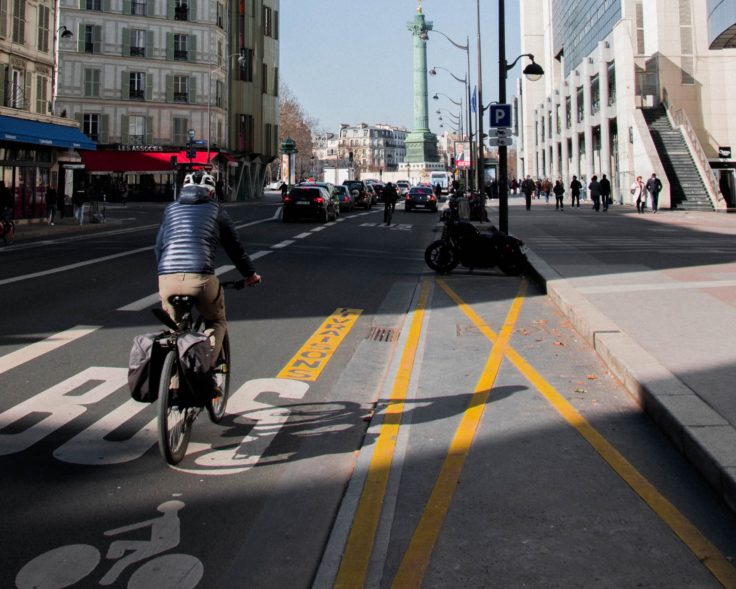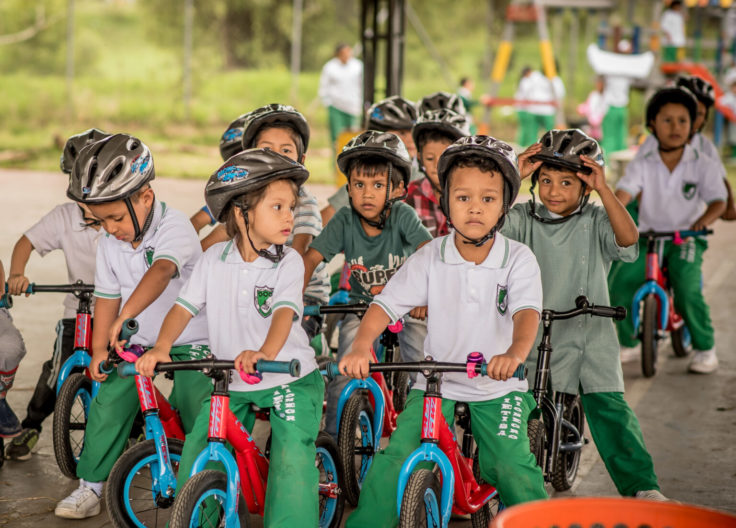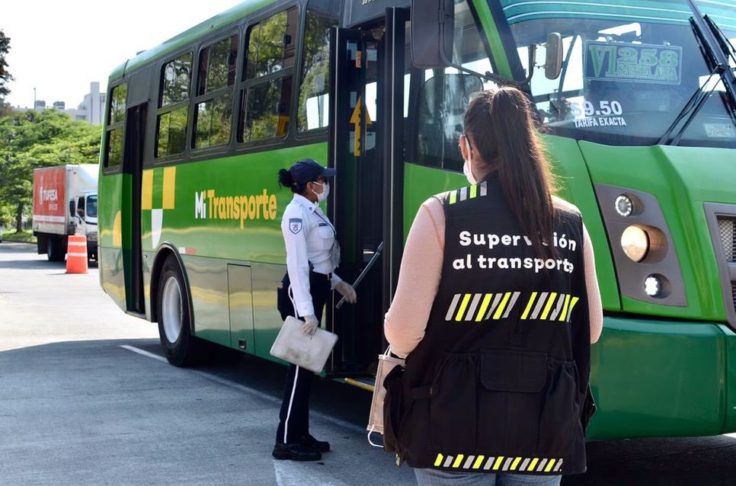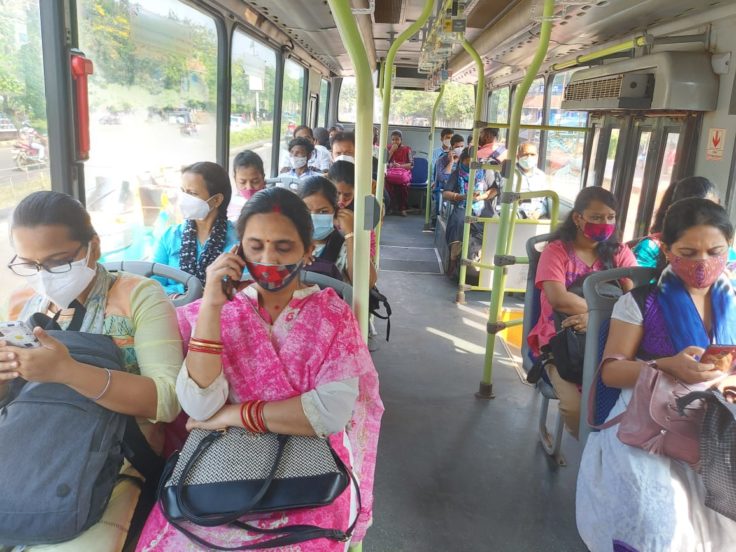October 07, 2022
STA 2023 Nominees: Responsive Governance During the Pandemic
Every city and regional government in the world has learned valuable lessons from the pandemic as they strive to recover and build more sustainable, equitable spaces that serve everyone.
Local governments are now focused on developing strategies to be more responsive to citizens’ needs and to become more resilient to universal challenges, like climate change.
For the 2022 Sustainable Transportation Award (STA) Nominee Cities, each city’s interventions responded to the immediate crises that were straining their social, economic, and infrastructure systems in the midst of the COVID-19 pandemic. For the 2023 STA Nominees, there has been a marked shift in these places’ perspectives on the pandemic’s challenges, as well as in the ways they are approaching opportunities for recovery and future resiliency. The 2023 Nominees began working towards the promise of a ‘new’ (and perhaps better) normal for urban life. These local governments are now focused on developing strategies to be more responsive to citizens’ needs and to become more resilient to universal challenges, including the climate crisis, for a better future for all residents.
Responsive governance in the 2023 Nominees are reflected in their novel approaches to redesigning and rethinking the physical and social nature of their transportation systems and public spaces. Their vision for ‘Future Cities’ also accommodates the growing demand for more ‘Accessible Cities’, ‘Healthier Cities’, and ‘Caring Cities’, critical concepts that have been integrated into development plans and policies over the next decade. As a result, these Nominees are putting forth new economic development models, inclusive infrastructure strategies, and community-building programs that highlight the needs of the environment and their most vulnerable communities.
The 2023 Nominees — Ayacucho (Peru), Bhubaneswar (India), Cali (Colombia), Coimbra (Portugal), Córdoba (Mexico), Cuenca (Ecuador), State of Jalisco (Mexico), Kayseri (Turkey), Medellín (Colombia), Mérida (Mexico), Paris (France), and Rionegro (Colombia) — have shown a collective effort to adopt a bottom-up approach to issues like inclusion, care, and civic participation, and to highlight them in public policies. The resulting progress in transport services and public infrastructure puts a critical emphasis on citizen participation, empirical data, and innovation as a means to create a more sustainable and inclusive urban future. Major themes of accessibility, health, and care stood out amongst the 2023 Nominees, as outlined below.

Accessible Cities
Many cities observed changes in the urban infrastructure of public spaces and transport services during the pandemic to adapt to the health restrictions and accessibility challenges posed by the crisis. The use of public space began to prioritize pedestrianization and non-motorized transportation in favor social distancing, while creating new recreational opportunities. A number of 2023 Nominees worked to incorporate cycle lanes and pedestrian plazas into their neighborhoods during the pandemic to increase accessibility for both cyclists and pedestrians, and are now expanding their commitments to these systems.
In Mérida, Mexico, pedestrian spaces were expanded and enhanced around popular commercial hubs. In total, the city upgraded 1.2 square kilometers of an open-air commercial tourist hub to highlight public health and safety, with improved multi-modal public transit connections. The city has also added over 130 kilometers of cycling lanes since the pandemic.
In Paris, France, 52 kilometers of cycling paths were created as temporary lanes during the pandemic to promote new modes of transport for Parisians who were unable to use public transit. Many of the city’s pop-up cycle lanes are now in the progress of being made permanent.
The city of Rionegro, Colombia created comprehensive programs for integrating bicycles into their public transportation system by adding infrastructure connections to increase bike access. The city has also been promoting cycling to youth by collaborating with over 45 nurseries and child development centers to train children in cycling.

Healthier Cities
The pandemic also catalyzed many cities and their leaders to move quickly on policies to improve air quality in areas where pollution has adversely impacted the health of citizens during the pandemic.
Paris introduced Low Emission Zones to protect citizens living in densely-populated areas with the highest rates of air pollution. Within the LEZs, citizens are encouraged to use cleaner modes of transportation, while the city also plans to make updates to its transit system to facilitate the major mode shift needed to reduce car trips. Paris passed its third Air and Climate Plan in 2018 and has since implemented several recommendations to achieve its goal of reducing local emissions by 100% and its carbon footprint by 80% (compared to its 2004 levels) by 2050 in the metro area.
Medellín, Colombia launched its own Plan Integral de Gestión de la Calidad del Aire (Comprehensive Plan for the Management of Air Quality) in 2016. Since then, the efforts have evolved to create Urban Protected Air Zones in central areas, including Downtown Medellín, to reduce atmospheric pollutants and emissions from transportation.
Cuenca, Ecuador connected important regions in the city through a completely electric system of tram rail powered by clean energy, which is complemented by a public bicycle system to encourage less driving.
The State of Jalisco, Mexico has added the first electric bus route in the country serviced by a fleet of 38 electric vehicles, an important step towards more sustainable and cleaner mobility in the region. Jalisco also expanded the city of Guadalajara’s BRT service in 2022 with a second line (known as Mi Macro Periférico) to reach thousands more commuters.

Caring Cities
In many cities, the pandemic provided opportunities to involve citizens more directly in public policy while responding to the needs of marginalized communities in intentional ways, particularly when it comes to gender equity. The participatory design process has become an important means for the citizens to feel represented and included in urban and transport policy.
The State of Jalisco, for example, developed the My Passage Support for Women Program, a focused support group of over 12,000 women in marginalized conditions who benefit from free daily transport tickets and an annual MiBici bikeshare subscription.
Bhubaneswar, India’s CRUT (Capital Region Urban Transportation) system has incorporated a gender-sensitive approach by employing women and transgender drivers for e-rickshaws and as conductors in the city’s Mo-Bus fleets to ensure safety and inclusive employment opportunities within transportation.
Paris has incorporated guidelines based on its Gender and Public Space plan to create safe and accessible public spaces for women, children, the elderly, and people with disabilities. Under this plan, the city transformed over 169 streets around schools by adding temporary barriers, potted plants, and artwork on the pavements to become pedestrians-only places, acting as a “second schoolyard” for families and children.

Cities worldwide are continuing to learn essential lessons from the pandemic as the world now moves towards stages of recovery and rebuilding. Regional governments have begun efforts to focus on the perspectives and needs of vulnerable and marginalized groups, many of whom were disproportionately impacted by the crises of the past two years. Now, urban policies and plans are incorporating considerations specifically for these communities — efforts that will make them better places for everyone to live. As seen in the work of the 2023 STA Nominees, governments around the world are taking novel approaches to integrating health, access, and care models into their visions for future cities that are more resilient and empowering for all residents.
Learn more about the cities and regions making strides in equity and inclusion by registering for ITDP’s upcoming webinar on Connecting Communities Through Equitable Mobility Planning in Bogotá, Jalisco, and Peshawar.
Learn more about this year’s STA Award Ceremony and get a closer look at the 2023 Nominees and best practices for sustainable, equitable transportation here.
